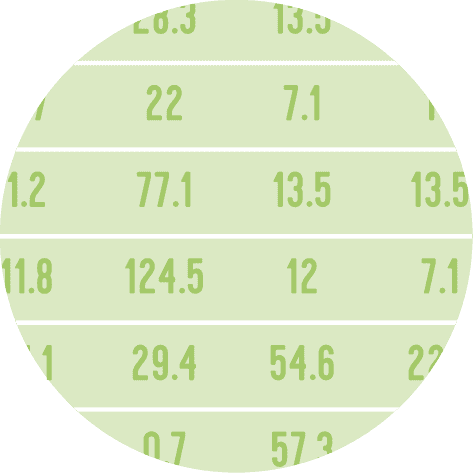Libraries
First, you need to install flexitext with the following command: pip install flexitext.
Flexitext is one of 2 python libraries that make text formatting for matplotlib easy, along with highlight_text. It was created by Tomás Capretto and is inspired by the R package ggtext.
We'll also need to load matplotlib to create the figure.
import matplotlib.pyplot as plt
from flexitext import flexitextDynamically size
There is no built-in method in flexitext to dynamically increase the size of the text, but we can build it ourselved!
The dynamic_text_prop() func:
- takes a string and applies a property (like size or opacity) to each letter.
- the property's value starts at
initial_valueand increases byincrementfor each letter. - it skips spaces, keeping them as-is.
- it can optionally add an extra property to each letter thanks to the
prop_to_addargument
def dynamic_text_prop(string, prop_name, initial_value, increment, prop_to_add=None):
text = ""
value = initial_value
for letter in string:
if letter != " ":
if prop_to_add is not None:
text += f"<{prop_name}:{value}, {prop_to_add}>{letter}</>"
else:
text += f"<{prop_name}:{value}>{letter}</>"
value += increment
else:
text += " "
return text-
Let's see how to use it in practice:
# Init a figure
fig, ax = plt.subplots(figsize=(8, 8), dpi=200)
text = "this text has a weird size!"
text = dynamic_text_prop(text, prop_name='size', initial_value=10, increment=2)
flexitext(x=0.05, y=0.6, s=text)
# Display the output
plt.show()Dynamic opacity
And we can imagine exactly the same thing for dynamically changing opacity:
# Init a figure
fig, ax = plt.subplots(figsize=(8, 8), dpi=200)
text = "this text has a weird opacity!"
text = dynamic_text_prop(text, prop_name='alpha',
initial_value=0.1, increment=0.03, prop_to_add='size:25')
flexitext(x=0.05, y=0.6, s=text)
# Display the output
plt.show()Going further
You might be interested in:
- how to use the highlight_text package, a tool similar to
flexitext - how to draw arrows with an inflection point
- how to draw curved arrows







